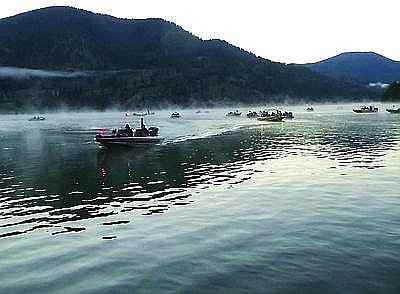FWP biologists plan to reduce invasive plants in Noxon, Cabinet Gorge reservoirs
Montana Fish, Wildlife & Parks biologists are seeking to reduce invasive plant species and improve aquatic habitat in Noxon and Cabinet Gorge reservoirs in Sanders County.
Overall, the proposed effort seeks to improve the health of the fish habitat and provide more fishing and recreational access to the reservoirs earlier in the season.
The proposed project would include using herbicides and mechanical means to reduce Eurasian watermilfoil and hybrids of Eurasian watermilfoil and native watermilfoils, curly-leaf pondweed, and flowering rush in the reservoirs.
These improvements would continue the aquatic invasive plant species management that has been occurring in these reservoirs throughout the past decade.
The proposal is open to public input through May 24. Funding for the project would include support from Avista Corporation as part of the Clark Fork Settlement Agreement.
If the project were to proceed, minimal disruption to recreation is anticipated because treatment would be restricted to specific locations and would occur over a brief period.
Eurasian watermilfoil, an invasive aquatic plant, was first confirmed in Noxon Reservoir in 2007. In 2008, the Sanders County Commissioners established the Sanders County Aquatic Invasive Plants Task Force to develop and implement an integrated weed management approach to contain and manage infestations. Since the initial discovery, FWP and its partners have identified strategies for reducing the spread of these invasive plants.
Under the proposed project, herbicides would be used to reduce coverage of milfoil at access sites and high-use areas. The proposed action would also involve the use of physical means of treating or harvesting aquatic plants including cutting, pulling, raking, diver dredging, and bottom barriers. Similar to herbicides, these methods may be used to reduce coverage at boat launches and other high use areas, such as docks and swimming areas.
Deceptively delicate and fragile in appearance, Eurasian watermilfoil forms thick mats in shallow areas of a lake, quickly growing and spreading to block sunlight, killing off native aquatic plants that fish and other underwater species rely on for food and shelter. If left unchecked, invasive watermilfoil will spread through a lake, or even to other lakes by transmission.
For more information on this project and to provide input, visit fwp.mt.gov/news/public-notices.



